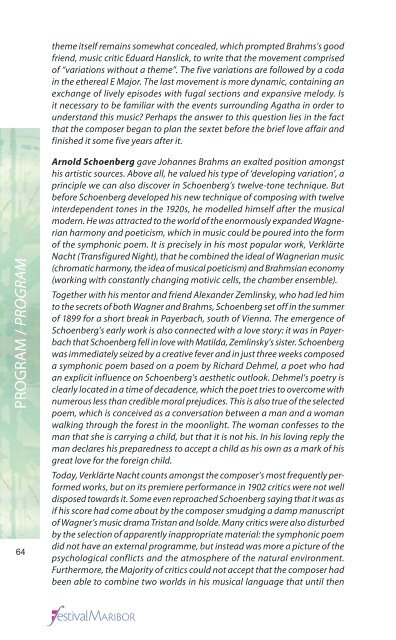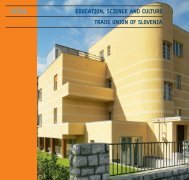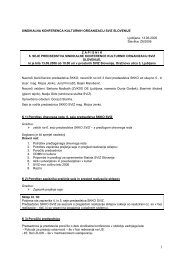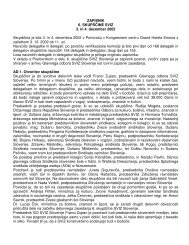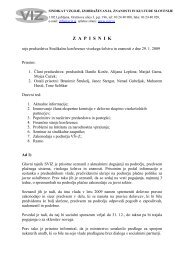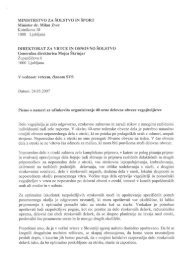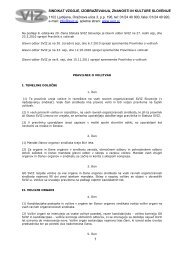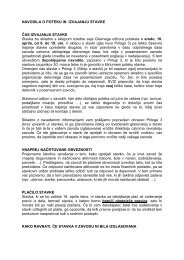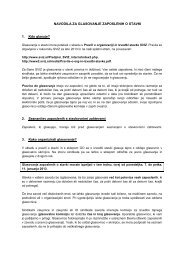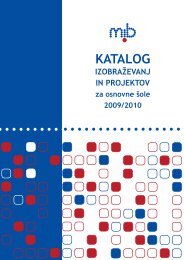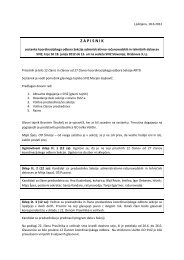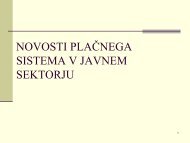You also want an ePaper? Increase the reach of your titles
YUMPU automatically turns print PDFs into web optimized ePapers that Google loves.
theme itself remains somewhat concealed, which prompted Brahms’s good<br />
friend, music critic Eduard Hanslick, to write that the movement comprised<br />
of “variations without a theme”. The five variations are followed by a coda<br />
in the ethereal E Major. The last movement is more dynamic, containing an<br />
exchange of lively episodes with fugal sections and expansive melody. Is<br />
it necessary to be familiar with the events surrounding Agatha in order to<br />
understand this music? Perhaps the answer to this question lies in the fact<br />
that the composer began to plan the sextet before the brief love affair and<br />
finished it some five years after it.<br />
PROGRAM / PROGRAM<br />
64<br />
Arnold Schoenberg gave Johannes Brahms an exalted position amongst<br />
his artistic sources. Above all, he valued his type of ‘developing variation’, a<br />
principle we can also discover in Schoenberg’s twelve-tone technique. But<br />
before Schoenberg developed his new technique of composing with twelve<br />
interdependent tones in the 1920s, he modelled himself after the musical<br />
modern. He was attracted to the world of the enormously expanded Wagnerian<br />
harmony and poeticism, which in music could be poured into the form<br />
of the symphonic poem. It is precisely in his most popular work, Verklärte<br />
Nacht (Transfigured Night), that he combined the ideal of Wagnerian music<br />
(chromatic harmony, the idea of musical poeticism) and Brahmsian economy<br />
(working with constantly changing motivic cells, the chamber ensemble).<br />
Together with his mentor and friend Alexander Zemlinsky, who had led him<br />
to the secrets of both Wagner and Brahms, Schoenberg set off in the summer<br />
of 1899 for a short break in Payerbach, south of Vienna. The emergence of<br />
Schoenberg’s early work is also connected with a love story: it was in Payerbach<br />
that Schoenberg fell in love with Matilda, Zemlinsky’s sister. Schoenberg<br />
was immediately seized by a creative fever and in just three weeks composed<br />
a symphonic poem based on a poem by Richard Dehmel, a poet who had<br />
an explicit influence on Schoenberg’s aesthetic outlook. Dehmel’s poetry is<br />
clearly located in a time of decadence, which the poet tries to overcome with<br />
numerous less than credible moral prejudices. This is also true of the selected<br />
poem, which is conceived as a conversation between a man and a woman<br />
walking through the forest in the moonlight. The woman confesses to the<br />
man that she is carrying a child, but that it is not his. In his loving reply the<br />
man declares his preparedness to accept a child as his own as a mark of his<br />
great love for the foreign child.<br />
Today, Verklärte Nacht counts amongst the composer’s most frequently performed<br />
works, but on its premiere performance in 1902 critics were not well<br />
disposed towards it. Some even reproached Schoenberg saying that it was as<br />
if his score had come about by the composer smudging a damp manuscript<br />
of Wagner’s music drama Tristan and Isolde. Many critics were also disturbed<br />
by the selection of apparently inappropriate material: the symphonic poem<br />
did not have an external <strong>program</strong>me, but instead was more a picture of the<br />
psychological conflicts and the atmosphere of the natural environment.<br />
Furthermore, the Majority of critics could not accept that the composer had<br />
been able to combine two worlds in his musical language that until then


